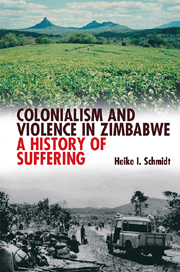1 - Introduction
Published online by Cambridge University Press: 05 May 2013
Summary
Probably the most famous work of art portraying suffering and violence is Picasso's painting Guernica (1937). Many readings of this painting are possible; one would be that in the face of utter destruction, Guernica depicts an affirmation of personhood. This is the leitmotif of this book. It is the voice breaking the silence of violation, without romanticising it or assuming its authenticity that this book is listening out for. The purpose of this study is to examine historical phenomena such as colonialism, nationalism, and decolonisation, with the human condition as the starting point of the historical examination, not its by-product or determinant in the shape of resistance or coping strategies. Spatial practices such as forced displacement will be looked at through the lens of desire, that is, the purposeful choice to negotiate the boundaries of one's life-world individually or communally. From such a perspective, violence and suffering are seen as central to the understanding of Africa's past, yet not reduced to mere dislocation, disruption, and destruction. Violence aims at victimising and silencing those who are violated, but it does not always succeed in doing so. One of the most overlooked aspects in the study of violence has been the potential disconnect between the intent to violate and the perception of being violated. This is a void which this study aims to fill.
- Type
- Chapter
- Information
- Colonialism and Violence in ZimbabweA History of Suffering, pp. 1 - 32Publisher: Boydell & BrewerPrint publication year: 2013



